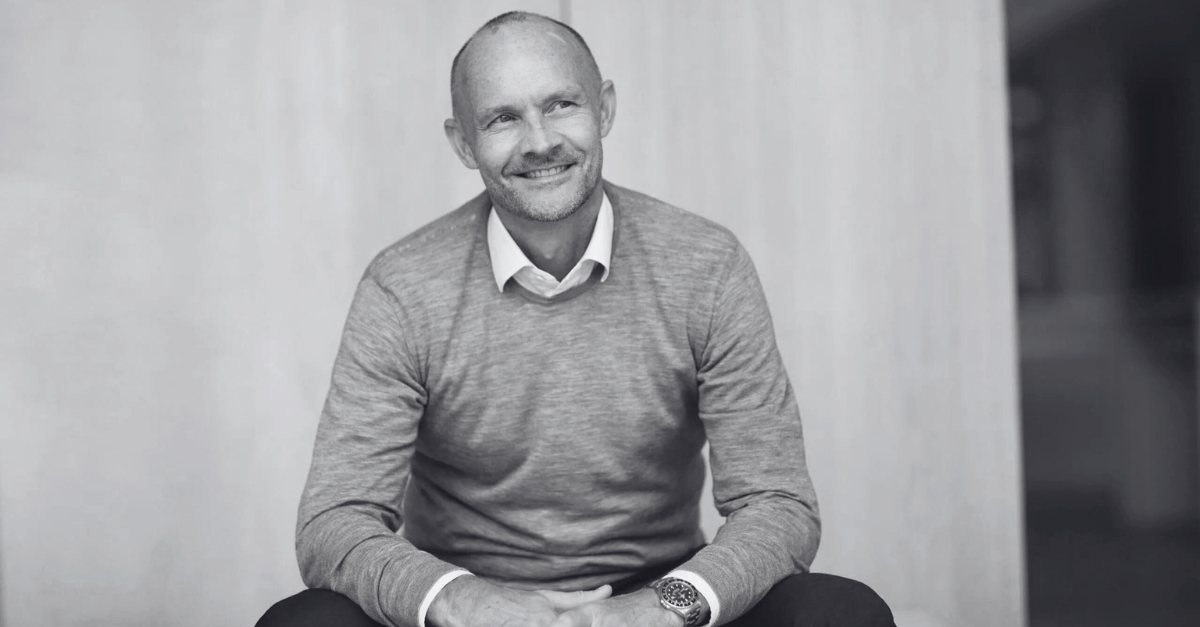The Process Towards a New Purpose
Over the past few years, WorkPoint has undergone a significant transformation.
During this time, we have transitioned from being a consultancy company to becoming a pure, evergreen SaaS organization with a go-to-market model that is 100% committed to partnerships.
With this new direction, it became clear that we also needed to revisit our mission and vision, which form the foundation for our behavior and decision-making processes at work. Throughout the process, we have gained valuable experiences and learnings.
In the following, we have covered some of the key insights we have gained along the way and hope to inspire others on their journey towards a new company purpose.
By Claus Jul Christiansen, CEO at WorkPoint & Sina Feldborg Mortensen, People & Culture Manager at WorkPoint
Three important takeaways:
- Take your time with the process. Continuous dialogues are essential for a good result, and each leader must take ownership.
- Be curious about all the good experiences others have had before you. It's not cheating to leverage others’ good experiences – if you adapt them to fit with your own organization.
- Be patient. Implementation is time-consuming, yet well-spent, and it requires great perseverance and managerial insistence.
Our need for developing a purpose
WorkPoint provides software solutions that help organizations rethink work processes, documents, cases, contracts, projects, and more. WorkPoint 365 is built on Microsoft 365, making it a powerful platform designed to streamline workflows, bringing structure to data to enhance collaboration and ensuring compliance.
But as an organization, our ambition is more than just software solutions with great functionality and cool features. We want to deliver solutions that not only meet the needs of today but are at the forefront and can anticipate tomorrow's challenges. Our ambition is to be a catalyst that helps individuals and organizations leverage the latest technological advancements to create real value. Because, when it comes down to it, software is really about the people who use it – and hopefully, derives some value from it in their workday.
Therefore, we needed a new purpose that could better embrace our ambitions of increased focus on being a frontrunner in technological development, while creating real value for our customers through our solutions. The new purpose must serve as a guiding star which will lead us in everything we do, and any decisions we make. In that way, the new purpose is also our WHY — the answer to why we exist as a company and why we go to work every day.
You can change and adapt your strategy continuously, but your company's purpose and values are not something you can or should change often. They are fundamental elements that you live by every day when running your business.

Our approach to developing a new purpose
As a purpose needs to function as your guiding star for a long period of time, it wasn't a task we could solve quickly – and we didn’t expect to do so either. In fact, we spent quite a long time working on it, and we started the process almost a year prior to the launch of our new purpose.
1 We approached it as a task for the leadership team, both because we consider laying down a direction as a task for the leaders to take upon themselves, but also because we assessed that the input and perspectives the different teams might have on this were, in fact, well represented through the leaders.
2 The process of creating our purpose primarily involved brainstorming and discussing the value we create for customers, i.e., what we all contribute with, regardless of our roles and tasks at WorkPoint. This time, we really wanted to focus on the value we create, where our previous company mission and vision pre-transformation had focused more on the product itself. Additionally, we spent time looking at what other organizations' purposes looked like to find inspiration for our own.
3 Finally, we also delved into the more theoretical approach to what a good purpose really is and what it should be able to do. We concluded that our new purpose should be inspiring and motivating, informing about the difference we make and how we improve someone's work life, be practical and action-oriented yet grand and aspirational, as well as easy to remember. On top of that a good purpose should be evergreen in the sense that the ambition must never be fully achievable. It should always be something to strive for—something you can continually improve on.
We brainstormed on various occasions, and the dialogues themselves gave the leadership team better alignment. Ultimately, we ended up creating the final purpose at a leadership team offsite day.
Each leader came to the offsite with their own interpretation of a good and strong purpose based on all the input and learnings that had already been gathered. This helped pave the way for co-creation.
But, we weren't ready to share the new purpose right away. The leadership team needed time to mull it over and ensure that we still thought it was not just good, but also right for the organization, after a week, two weeks, and a full month. So, we let it sit for a while and periodically revisited it to discuss whether we still felt it was a good fit, as we were very much aware that it wasn't something we could easily change once we had made the decision and made it public to the rest of the organization. Our new purpose became:
We enrich your work… with tools you love
When it came down to it, we did in fact not change it at all during our “thinking period”. Not a single word was altered, but the time was still well spent because it only kept growing on all of us, indicating that we had found the right purpose for us.
In hindsight, it also had a positive impact that our new purpose had become so internalized among the individual leaders that they took great ownership of it. This was significant for the subsequent leadership task of implementing it afterwards.

The difficult implementation – From visual awareness to lived behavior
In hindsight, it was easy to agree on our new purpose, even though it required a lot of energy and time. The difficult part is implementing it and making it the guiding star that can support behaviour and decisions in everyday life at work.
We launched our new purpose internally at a Townhall meeting at the end of May 2024, where we spent time explaining the groundwork that had gone into developing our new purpose to make it meaningful for the broader organization. At the same time, we made a great effort to create visual aids around it by creating PC screensavers with it on, putting it up on the walls in central places in the offices, integrating it into PowerPoint templates, etc., as soon as it was launched.
After the initial launch, we gave it some time to settle in the organization. Then, after the summer break in 2024, all the leaders started facilitating workshops in their teams to anchor our purpose further. Here, they discussed our new purpose and had dialogues about its significance in relation to their specific areas of responsibility and work. How they were already working in line with our purpose and where they could further leverage it as a guiding star in relation to priorities and decisions in daily work life.
This led to some very good and diverse discussions in the different teams, making the purpose more tangible and meaningful because it was linked to areas of responsibility and actual tasks.
Another initiative we have taken to make the purpose visible is to bring the perceived customer value of our product closer to the employees. It can be a difficult task to link specific work tasks with the value that customers receive from it. So, we asked a real customer to come and present the product our employees had created for them and talk about the value it has added to their organization and work life.
Obstacles are part of the process
But it doesn't end there. You can certainly find employees who don't think they use it for anything or don't think it makes sense to work with a purpose. Therefore, it is a central leadership task to use the purpose in daily management and the ongoing dialogues with employees – both at a team level and 1:1. As a leader, you should use as part of your priorities, your discussions, your planning, etc.
It's not an easy task, but we find that we are well-equipped for it. Through the long process of creating our purpose and the many discussions we have had in our leadership team about it, we have gained such great ownership of our purpose that it is easier for us than it otherwise would have been to use it actively in our daily management.
Another challenge is that the approach required to work with a purpose in terms of time, reflection, many discussions, and continuous perseverance sometimes challenges the work logic that otherwise characterizes our organizations today, where execution, speed, and quick decisions are also a basic condition.
Therefore, the real challenge is probably to be able to “hurry slowly” and try to juggle the two logics, both of which are necessary, but pull in slightly different directions if you are not very persistent and aware of the necessity of both logics.
To create change, we need to keep our purpose in focus. If we forget it, it fades away. Therefore, we try to implement it directly and indirectly in everything we do. But it also requires ongoing leadership commitment in the future. This is not something we will ever be finished implementing. Hopefully, it will gradually become part of our culture, but we must continuously revisit and reinforce it to keep it alive.
